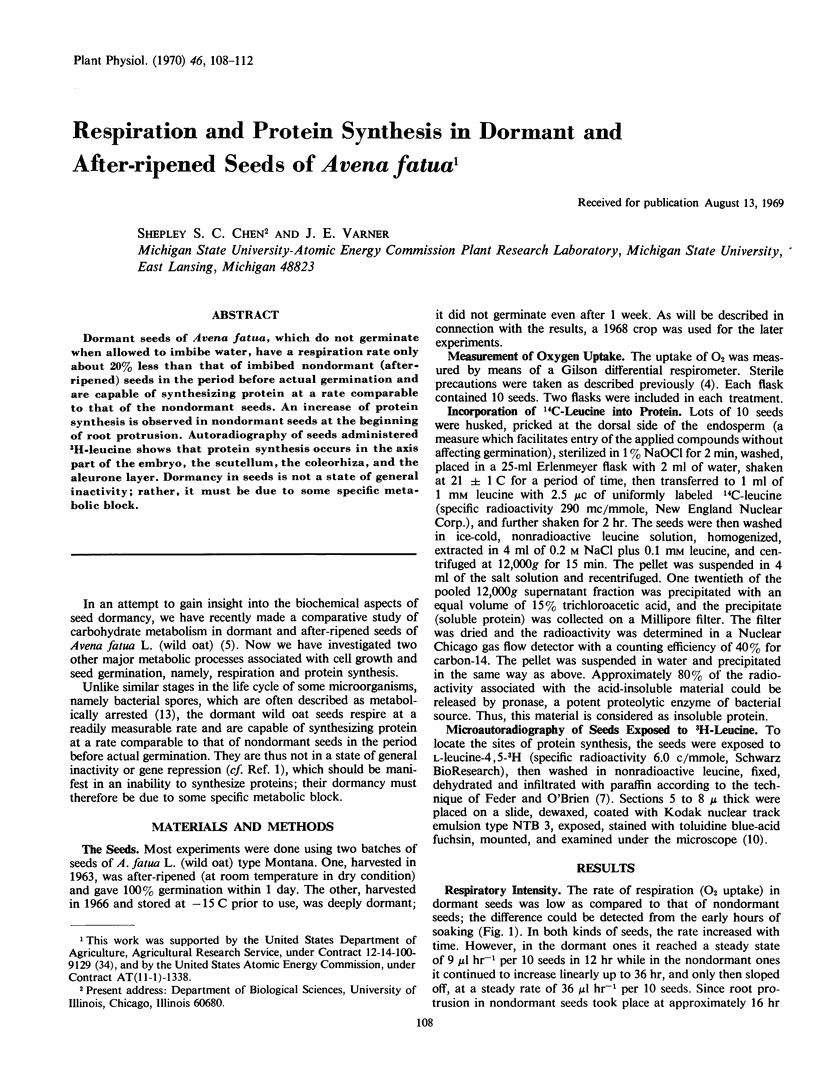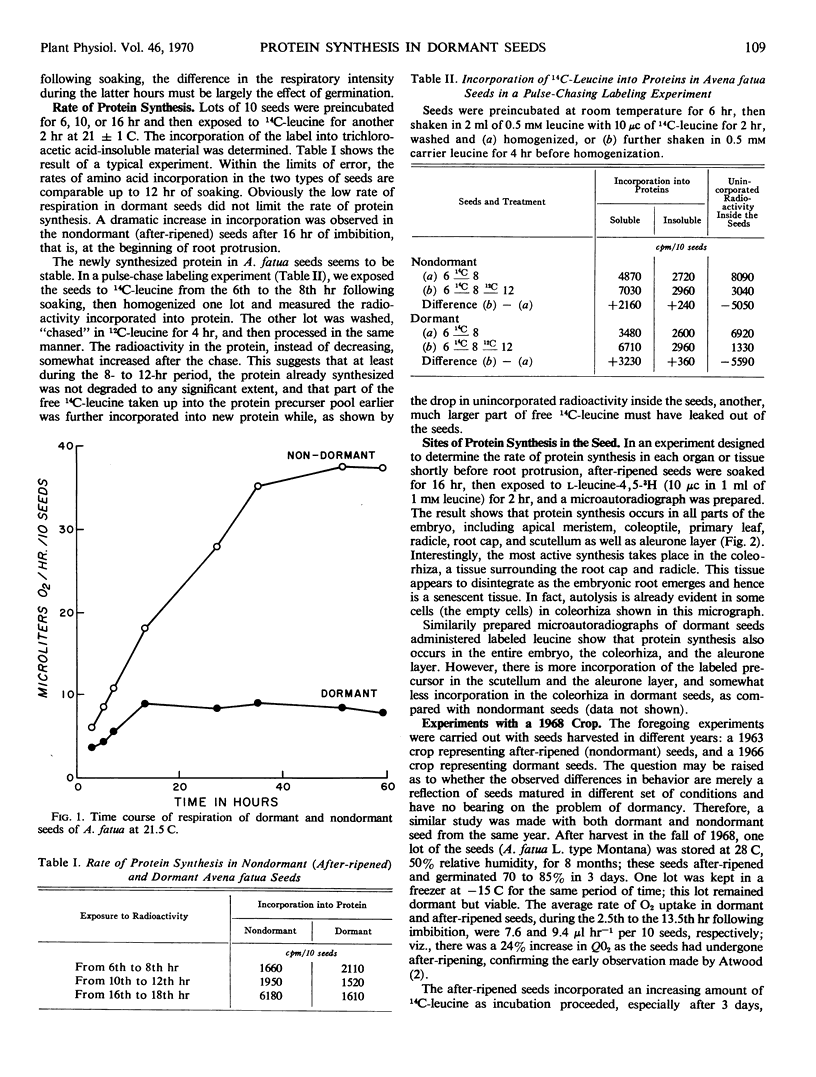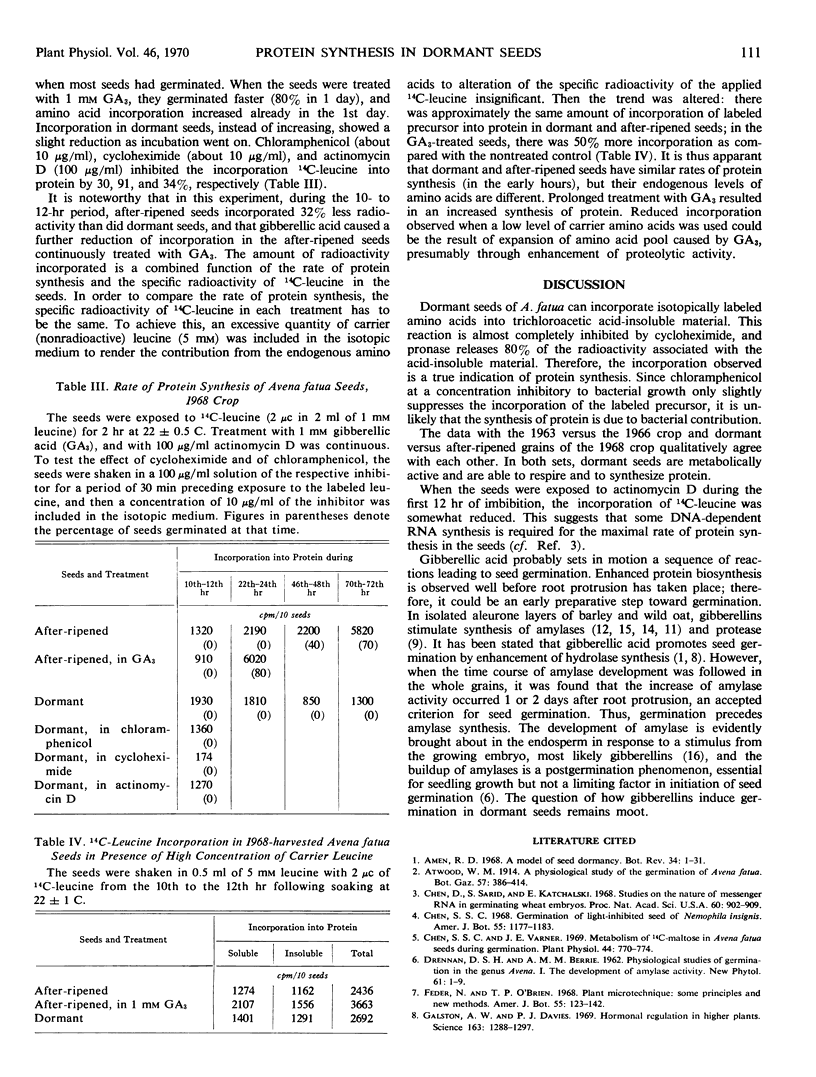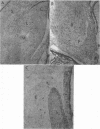Abstract
Dormant seeds of Avena fatua, which do not germinate when allowed to imbibe water, have a respiration rate only about 20% less than that of imbibed nondormant (after-ripened) seeds in the period before actual germination and are capable of synthesizing protein at a rate comparable to that of the nondormant seeds. An increase of protein synthesis is observed in nondormant seeds at the beginning of root protrusion. Autoradiography of seeds administered 3H-leucine shows that protein synthesis occurs in the axis part of the embryo, the scutellum, the coleorhiza, and the aleurone layer. Dormancy in seeds is not a state of general inactivity; rather, it must be due to some specific metabolic block.
Full text
PDF




Images in this article
Selected References
These references are in PubMed. This may not be the complete list of references from this article.
- Chen D., Sarid S., Katchalski E. Studies on the nature of messenger RNA in germinating wheat embryos. Proc Natl Acad Sci U S A. 1968 Jul;60(3):902–909. doi: 10.1073/pnas.60.3.902. [DOI] [PMC free article] [PubMed] [Google Scholar]
- Chen S. S., Varner J. E. Metabolism of C-Maltose in Avena fatua Seeds During Germination. Plant Physiol. 1969 May;44(5):770–774. doi: 10.1104/pp.44.5.770. [DOI] [PMC free article] [PubMed] [Google Scholar]
- Galston A. W., Davies P. J. Hormonal regulation in higher plants. Science. 1969 Mar 21;163(3873):1288–1297. doi: 10.1126/science.163.3873.1288. [DOI] [PubMed] [Google Scholar]
- Jacobsen J. V., Varner J. E. Gibberellic Acid-induced synthesis of protease by isolated aleurone layers of barley. Plant Physiol. 1967 Nov;42(11):1596–1600. doi: 10.1104/pp.42.11.1596. [DOI] [PMC free article] [PubMed] [Google Scholar]
- Paleg L. G. Physiological Effects of Gibberellic Acid: I. On Carbohydrate Metabolism and Amylase Activity of Barley Endosperm. Plant Physiol. 1960 May;35(3):293–299. doi: 10.1104/pp.35.3.293. [DOI] [PMC free article] [PubMed] [Google Scholar]
- Varner J. E., Chandra G. R. HORMONAL CONTROL OF ENZYME SYNTHESIS IN BARLEY ENDOSPERM. Proc Natl Acad Sci U S A. 1964 Jul;52(1):100–106. doi: 10.1073/pnas.52.1.100. [DOI] [PMC free article] [PubMed] [Google Scholar]



